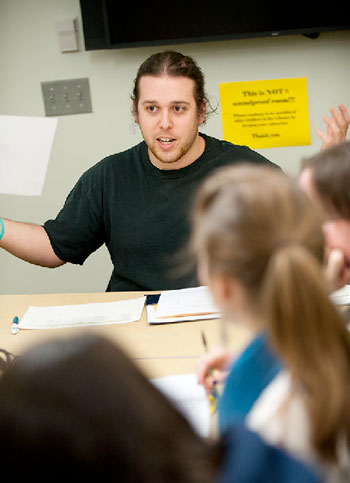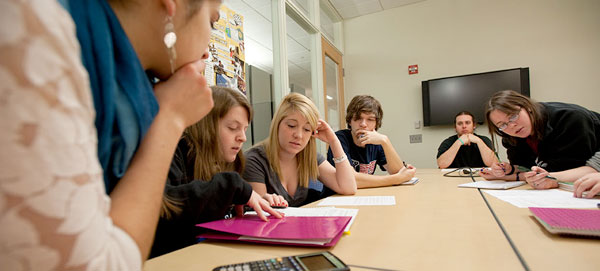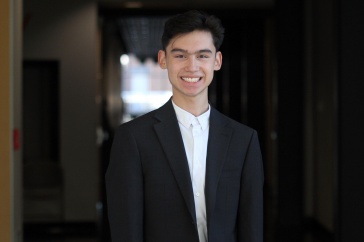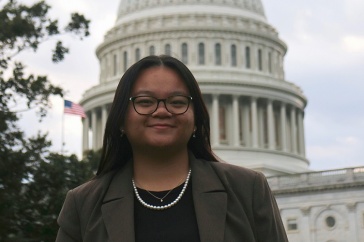Peer-Led Team Learning gives talented upperclassmen opportunities to lead classmates in study sessions and team projects.
You’re a freshman, in a lecture hall with as many as 200 students. But still, you're feeling kind of lonely. You’re taking an introduction to chemistry—or to biology or to physics—and it feels like an ocean is rising between you and your love for science.
“I’ve seen kids take general chemistry first semester and then you don’t see them second semester because they’ve dropped out or changed their major,” says Matt Gentile ’12, a general biology major.
In other words, you're overwhelmed. You're stranded, alone on an academic island. This is why Chemistry Professor Christopher Bauer is telling students to stick together. Bauer is leading a transformation at UNH with an educational model called Peer-Led Team Learning (PLTL). In PLTL, talented upper classmen lead new students in regular study sessions, work with them in teams, and show them how to break down complicated coursework so that it is easier to manage.
In Bauer’s program, students who get a B or better in general chemistry— Chemistry 403 and 404 courses—are asked at the end of their freshman year to become PLTL leaders. Then they take a course called Peer Leadership in Chemistry, and learn how to lead groups of students, and how to engage them in problem-solving discussions. They come to understand the various styles in which different students learn. Then leaders are assigned a group of about eight students and work with them and support them in ways that a professor in a lecture of 200 students could not.
Developed in the early 90s, PLTL also begins to address a larger issue. That the U.S. has fallen behind China, India, and many other countries in the STEM fields (science, technology, engineering and math), is a well known, if alarming, contemporary problem with no easy answer. National calls have been made over the years, asking the academic community for solutions. To answer that call UNH has procured $7 million in federal grant money over the past 10 years to implement its array of innovative programs and studies. Some of this money has gone to bolster PLTL.
Peer-Led Team Learning is designed to help students in the U.S. regain their international leadership in science, technology, engineering and math (STEM) fields.
The model has been proven to drastically reduce student attrition rates at other universities that have adopted it. Bauer is working on a report that will, presumably, quantify the efficacy of his program. In the meantime, he is encouraged by the surveys he’s conducted, and by all the informal feedback he hears from group leaders like Katherine Frazier ’12, an animal sciences- pre-veterinary medicine major.
“I have had students directly tell me that PLTL sessions have improved their understanding of general chemistry topics effectively enough to help them receive better exam grades and pass the course,” says Frazier.
If freshmen are overwhelmed by the expanse of information that surround them in their first days on campus, PLTL offers a roadmap. If they do the work, the resources are there to help them make it, and Bauer points out how important it is to feel the social support of a small group.
“Part of the issue in learning the sciences is you can get better at it if you stick with it long enough,” says Bauer. “And realize that it is not going to click simply because you sit down and read something. You have to muddle through the material, you have to be willing to be frustrated, and you have to sit down and dig through stuff. The peer groups are a great place for that.”
Versions of PLTL have been adapted for introductory courses in the departments of biology and physics.
Bauer points out that one collateral benefit of PLTL is how it gives student leaders a chance to teach. Based on her experience in PLTL, Chelsea Friend has decided to become a high school biology teacher. She graduated from UNH in December and is now pursuing a master’s degree in education.
“Since the majority of students in general chemistry were freshman, working with them wasn't too much different than working with high schoolers,” says Friend. “So it gave me great practice in methods of motivating and encouraging students similar to those I will teach in the future.” And before too long those students will be showing up on college campuses. Encouraged and motivated by a veteran like Friend, perhaps now nothing will come between them and their love for science.
Written by Kurt Mullen ’94. Photos by Perry Smith, UNH Photographic Services.

















































